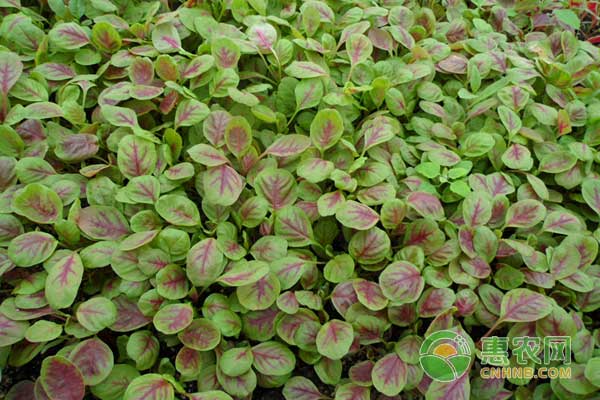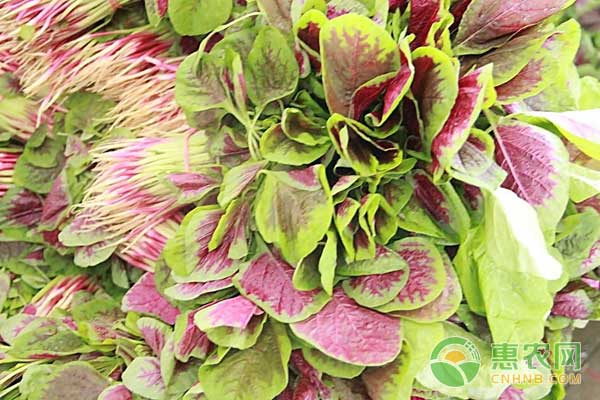Amaranth has been eaten as wild vegetables since ancient times and has a long history of cultivation. The leek is soft, the dish is rich, and the entrance is sweet. Amaranth has strong resistance, easy growth, drought tolerance, moisture resistance, high temperature resistance, less pests and diseases, and is easy to grow and manage. Now I will share the cultivation and management techniques of leek as follows, I hope to help you:
First, the variety selection
1. Types of amaranth
In addition to the wild garden and the seed oyster, the leeks can be divided into round leaf species and sharp leaf species according to the leaf shape. According to the color of its leaves, it can be divided into green dragonfly, red dragonfly and color dragonfly.
2. Variety selection
(1) Green cricket: The taste is harder and suitable for spring and autumn cultivation.
1 Shanghai white rice bran: Shanghai farmer variety, late maturity, strong heat resistance, suitable for spring sowing or autumn sowing.
2 Guangzhou Liuyeyu: Guangzhou farmer variety, strong cold and heat resistance.
3 Nanjing fungus è‹‹: Nanjing farmer variety.

(2) Red peony: The taste is softer than green, and the heat resistance is medium. The growth period is 30~40 days, suitable for spring and autumn cultivation.
1 Chongqing Dahongpao: Chongqing farmer variety, early maturity, strong drought tolerance.
2 Guangzhou Red Dragonfly: Guangzhou farmer variety, late ripening heat resistance.
3 Kunming Red Dragonfly; Kunming farmer variety, color.
(3) Color è‹‹: Early maturity, strong cold resistance, spring sowing for about 50 days, summer sowing for about 30 days
Received. Suitable for early spring cultivation.
1 Shanghai sharp-leaf red rice bran: Shanghai farmer variety, early maturity, medium heat resistance.
2 Guangzhou sharp-leaf flower red dragonfly: Guangzhou farmer variety, early maturity, strong cold resistance.
Second, the cultivation season
Amaranth is a thermophilic vegetable that can be cultivated during the frost-free period from spring to autumn, with a growth period of 30 to 60 days.
Amaranth grows fast, so it can be cultivated in plastic greenhouses or energy-saving solar greenhouses in spring, autumn and winter. Plastic greenhouses are cultivated in spring, summer and autumn. Amaranth has a short growing period and short plants, so it is suitable for close planting. It can be planted in the middle of the main crops, such as solanes, melons and legumes, or it can be planted on the edge, making full use of the land for early supply.
Third, cultivation techniques
1. Soil preparation
Amaranth consumes a lot of soil and is not suitable for continuous cropping. For cultivation of Mo Cai, you should choose a plot with flat terrain, convenient drainage and irrigation, less weeds, deep soil layers and more organic matter. The fine roots of the leek seeds are well developed and require fine soil preparation. Poor quality of land preparation is one of the important reasons for the lack of seedlings and ridges and the reduction of yield. The harvesting of seedlings, tender stems and leaves is generally carried out, and the depth of cultivation is 15 cm before sowing, and 1500 to 2000 kg of decomposed organic fertilizer is applied per 667 m 2 .
2. Sowing
Choose sandy loam or clay loam with flat terrain, convenient drainage, fertile and loose soil, and amaranth prefers alkaline soil. Live broadcasts are generally used to harvest seedlings for consumption. In the early spring from February to March, the sowing is mostly cultivated in greenhouses and small arch sheds; spring planting is carried out from April to May, and planting in stages is successively harvested.
Amaranth seeds have strong germination power, and the bottom water should be poured before sowing. After the water seeps, the soil is sown and then sown. Seeding before sowing can promote Miao Qi Miao Zhuang. The sowing period is divided into spring sowing and summer sowing. It can be sown from March to October. The surface of the glutinous rice is fine and fine, and the width of the silicon is 1.2 to 1.5 meters. In order to make the seeds evenly seeded, a small amount of fine sand can be mixed and planted in increments. The small cover of the leek seeds should be shallow. It is advisable to cover 1.0~1.5 cm of soil with good land preparation quality. You can also cover the soil with plenty of rain and cover it with straw. The early spring planting temperature is lower than the seedlings, and the seeding volume should be large, 23~5 kg per 667 meters. Planting 2 kg per 667 m 2 in late spring or late autumn. Sowing in summer and early autumn, the temperature is higher and the emergence is faster and better. The seeding rate per 667 m 2 is 1~2 kg. The seedlings were transplanted and transplanted with the harvesting tender stems, and the plant spacing was 30 cm. The amount of early seeding during the sowing period is slightly larger. After sowing, do not cover the soil or cover the soil or cover with fine sand or grass ash or human and animal excrement. After sowing, depending on the weather and soil, watering and topdressing will take place in about 10 days. In spring, the temperature is low and the water is high. Generally, the watering should be controlled only when it is hot or dry.

3. Field management
The growth of leek is not like magpie. Spring sowing amaranth due to low temperature, 7 to 12 days after sowing, and summer and autumn sowing, only 3 to 5 days to emerge. When the seedlings have 2~3 true leaves, the first top dressing is carried out, and after 12 days, the second top dressing is carried out; when the first picking up the pickles, the third top dressing is carried out; after each harvesting, the dung should be chased once, each time 667 m 2 urea 5~10 kg. When the temperature is low in spring and autumn and winter, it can be applied to thin manure. The watering of leeks cultivated in spring should not be too large. Pay attention to proper irrigation in summer and autumn for growth. Strengthening the management of fertilizer and water is the main measure for high yield and quality of amaranth. Water and fertilizer with no seedling growth is slow, easy pumping sprouts flowering and yield poor low quality.
4. Weeding
There are many weeds in the field of leeks, and the weeds in the field need to be removed in time after harvesting.
5. Harvesting
Amaranth is a leafy vegetable that has been harvested several times. The yield of amaranth seeds is high and easy to harvest, and it is generally not only for harvesting. Individual plants of excellent variety traits can be selected from ordinary scorpions, and they are not cut. Large individual plants should be placed on pillars to prevent lodging. When the seedlings turn yellow and the kernels become hard, the plants are cut and dried. The spring sowing amaranth is planted for 40 to 45 days, the plant height is 10 to 12 cm, and it is harvested when there are 5 to 6 true leaves. The first time the combined seedlings were harvested, the dense and growing seedlings were pulled out; the second harvest was cut with a sickle and the base was kept about 5 cm. When the side branches grow to 12-15 cm, the third harvest is carried out. Spring sowing Mo 667 meters: 1200 ~ 1500 kg. The leeks planted in summer and autumn are generally harvested 30 days after sowing, harvested 1 or 2 times, and the yield of 667 m 2 is about 1000 kg.
The above is the high-efficiency cultivation and management technology of leeks. If you want to know more about planting techniques, please pay attention to the Hui Nong School!
Tetanus Toxoid Vaccine,Toxoid Vaccine,Hep B Immune Globulin,Immunoglobulin Injections
FOSHAN PHARMA CO., LTD. , https://www.foshanpharma.com